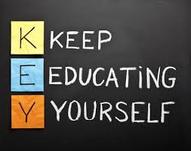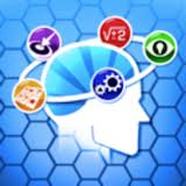
There have been several other headlines generated from our economic policies that stripped our schools of much needed funds, forced additional hardships on those who need our help, and bills passed that included legalized discrimination as part of public policy (which thankfully has since been voted down). It makes for a hotly contested election season; one that will be loaded with vitriol and misleading information. It is time for Kansas voters to be informed. It is time to teach our kids how to think critically so they can be informed citizens and not swayed by the influence of big money, attention grabbing headlines, and the faulty thinking and actions of our leaders. This is not a made-for-TV reality show. This is real life. These are our children at stake.
Today's headline that grabbed my attention came from the Lawrence Journal World: Area Legislator Hopes to Halt Common Core in its Tracks. Wow! Another attempt to derail something in education that has been approved by the Kansas State Board of Education and is currently being implemented in schools across Kansas! So I clicked on the link and began to read (you can too by clicking on the article title). Much to my disdain, but unfortunately not a huge surprise, was the notion that the representative in question (who thankfully does not live in my district), put this bill before the House Education Committee which would nullify Common Core ELA (English/Language Arts) and Math, as well as the Next Generation Science Standards and prohibit any school from administering tests aligned to those standards. Seriously?
But here's the kicker, and I quote: "The Common Core standards, I do believe, are not addressing the problems of the children," Dove said. It's not the standards themselves that worry him. In fact, he said, "I haven't seen the actual content of the Common Core. However I do not believe it is within the scope of our federal government to put something together when it comes to education," Dove continued. End quote.
Well here are a couple of lessons from the Common Core ELA Standards for this legislator if he chooses to read them before his bill is voted on:
From the Reading Anchor Standard #1: Read closely to determine what the text says explicitly and to make logical inferences from it; cite specific textual evidence when writing or speaking to support conclusions drawn from the text.
How can you make logical inferences about Common Core if you haven't read the text? We want to teach our children to read the text and be able to cite evidence to support what they believe to be true. Perhaps the adults in their life should model this skill.
From the Speaking and Listening Anchor Standard #3: Evaluate a speaker’s point of view, reasoning, and use of evidence and rhetoric.
I am hesitant to make judgments based on the quotes in one article, but on the surface it appears that this legislator's beef is with the political view that the federal government should not tell states (Kansas) or local schools what to teach. Well they didn't and if this legislator had been listening, or reading, or doing his homework, he would know this by now.
If you haven't taken a look at the Common Core Standards - do it now. You don't have to be an educational expert to read the ELA Anchor Standards (page 10). Look at the verbs they are asking kids to do - "read closely, examine, analyze, make inferences, integrate and evaluate content."
Or look on page 6 of the Math Standards for the 8 Standards of Mathematical Practice that reach across all content areas. What business doesn't want their employees to make sense of problems, reason, construct viable arguments, persevere, etc.?
Kansas parents and citizens are finally starting to hear the voice of reason and are beginning to stand up to the special interests and misinformed people that would undermine our educational foundation and reduce the effectiveness of Kansas educators. If that happens, Kansas kids lose; businesses lose; and Kansas will become irrelevant, known only for the Wizard of Oz, some basketball wins, and a place to pass through on the way to Colorado. We are better than that. We have a beautiful state with wonderful people and caring educators who work hard and want what's best for kids. Unfortunately we have some leaders who don't believe we know how to think for ourselves so someone outside our state must tell us how to think, vote, and act.
I, for one, think the lessons to be learned from Kansas leaders making today's headlines are that if you practiced the knowledge and skills offered in the Common Core framework, we wouldn't be having this divided political mess we are in right now. Stay informed. Keep Educating Yourself.




 RSS Feed
RSS Feed